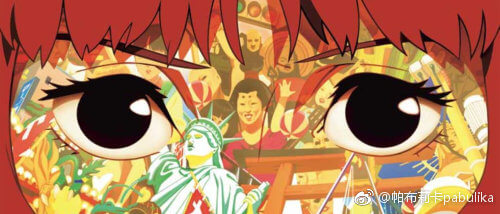
鸵鸟·孔雀·老鹰
◎ 吴冠中
鸵鸟
鸵鸟蹒跚地走着,一身的肉真馋人[1],她之生似乎是为了供人食用。她没有防卫的手段,敌人来了就跑,跑得特别快[2]。当跑不脱的紧急时刻,她将头钻进沙堆,她看不见敌人了,以为已安全,人笑这是鸵鸟心态[3]。是鸵鸟学了阿Q,还是阿Q学了鸵鸟,无从考证,也不必考证了。
孔雀
孔雀陶醉在自己的美丽中,她施施然地散步[4],侧目看行人,希望人们欣赏她的美,她估计人们都拜倒于她的艳丽。一个穿红衣服的孩子走过来了,她怕是与她媲美的,于是赶紧张屏,并左右摇摆,使出浑身解数[5]。开屏后确乎引来大群观赏的人们,人们赞美,欢笑,她似乎全听懂了歌颂的语言,自己十分开心。只一句,她永远没听懂:你是一个可怜的女人。
老鹰
灰褐色的老鹰从未意识到打扮自己的羽毛,而且她总离人群远远的,常盘旋于高空,远看她只是短短的线之一划。她目力好敏锐,遥远处一只奔跑的兔或鼠,一旦落入她的视线[6],她飞速降落,猛地一扑,便获取了生命的粮食。她那如钩的爪和嘴,令人恐惧,也令人欣赏[7],是强力之美,是尖锐之美,引无数画家竞折腰。
《鸵鸟·孔雀·老鹰》是中国当代著名画家兼散文家吴冠中于2000年写的一篇随笔。
[1]“鸵鸟蹒跚地走着,一身的肉真馋人”译为The ostrich hobbles with its tantalizing fleshy body,其中tantalizing作“吊胃口的”、“令人馋涎欲滴的”解。此句也可译为 The ostrich staggers along, its fleshy body looking so tempting to the human palate,但不如前译简约。
[2]“敌人来了就跑,跑得特别快”译为In the face of an enemy, it just runs away, and that very quickly,其中In the face of 作“面临”解,又后面and that very quickly中的that作“而且”解,用来加强语气。
[3]“鸵鸟心态”未译ostrich mentality,今用英语中现有的ostrichism(鸵鸟政策、自我陶醉)一词表达。
[4]“她施施然地散步”作“她大摇大摆地走动”或“她高视阔步地走动”解,译为It struts around即可。
[5]“一个穿红衣服的孩子走过来了,她怕是与她媲美的,于是赶紧张屏,并左右摇摆,使出浑身解数”译为When a little kid in red happens to come near, the peacock, taking her for a potential rival, immediately erects and spreads out its tail feathers and sways now to the left and now to the right as best it can,其中“她怕是与她媲美的”可按“害怕(认为)她是潜在的竞争对手”分别译为fearing that she might be a potential rival或taking her for a potential rival。“张屏”又作“开屏”,可译为erects and spreads out its tail feathers或spreads its tail to display its fine feathers。“左右摇摆”可译为sways now to the left and now to the right或sways from side to side,但前者较生动。“使出浑身解数”译为as best it can,比doing all it is capable of利落。
[6]“遥远处一只奔跑的兔或鼠,一旦落入她的视线……”译为As soon as it spots a distant hare or rat on the run …,其中spots作“发现”解,意同discovers,catches sight of等,又on the run是成语,意思是“奔跑中的”,也可用短语running like crazy替代。
[7]“她那如钩的爪和嘴,令人恐惧,也令人欣赏”可译为Its hooked claws and beak are both scary and admirable,但不如Its hooked claws and beak are scary but admirable确切,因后者稍许侧重了“令人欣赏”的意思。
Ostrich · Peacock · Eagle
◎ Wu Guanzhong
The Ostrich
The ostrich hobbles with its tantalizing fleshy body. The bird seems destined to be human food. It has no self-defence means. In the face of an enemy, it just runs away, and that very quickly. At the critical moment when it is hard pressed, it buries its head in the sand, thinking itself safe simply because it can’t see the enemy. People, therefore, refer to it in ridicule as ostrichism. It is impossible and also unnecessary to find out if Ah Q is the teacher of the ostrich or vice versa.
The Peacock
The peacock is intoxicated with its own beauty. It struts around with a sidelong glance at the pedestrians, hoping that they will stop to view and admire itself and believing that all people will be infatuated with its gorgeousness. When a little kid in red happens to come near, the peacock, taking her for a potential strong rival, immediately erects and spreads out its tail feathers and sways now to the left and now to the right as best it can. That succeeds in attracting a large group of spectators. They marvel at its beauty and cheer. The big bird looks very happy with all the words of praise, which it seems to understand fully. Nevertheless, there is one sentence it can never understand, that is,“You’re a miserable woman.”
The Eagle
The grayish brown eagle never thinks of preening itself. It keeps off from man and often wheels high up in the sky, only to disappear way up like a flash. As soon as it spots a distant hare or rat on the run, the sharp-eyed bird will swoop down on its prey for life-sustaining food. Its hooked claws and beak are scary but admirable. They embody the beauty of strength and sharpness and have been the favorite theme of innumerable painters.
未经允许不得转载:帕布莉卡 » 吴冠中《鸵鸟·孔雀·老鹰》 -经典散文英译-中英双语赏析
 帕布莉卡
帕布莉卡


 爱是一颗心遇到另一颗心(出处+配图)
爱是一颗心遇到另一颗心(出处+配图) 

